Weekly Index
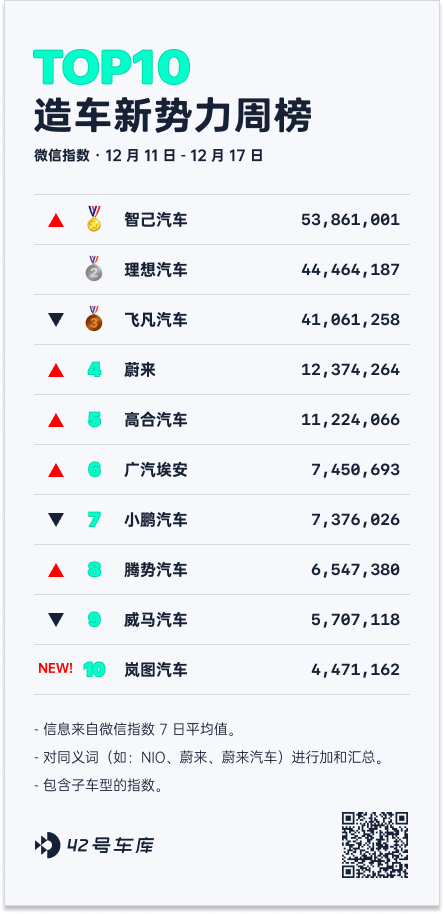
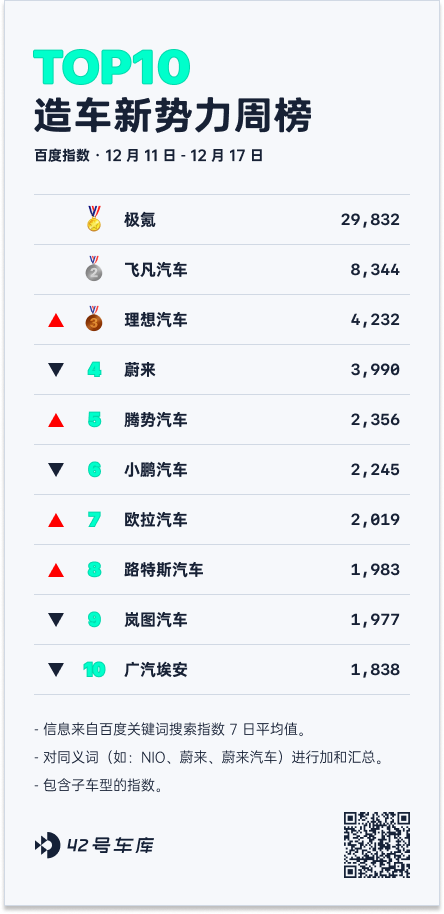
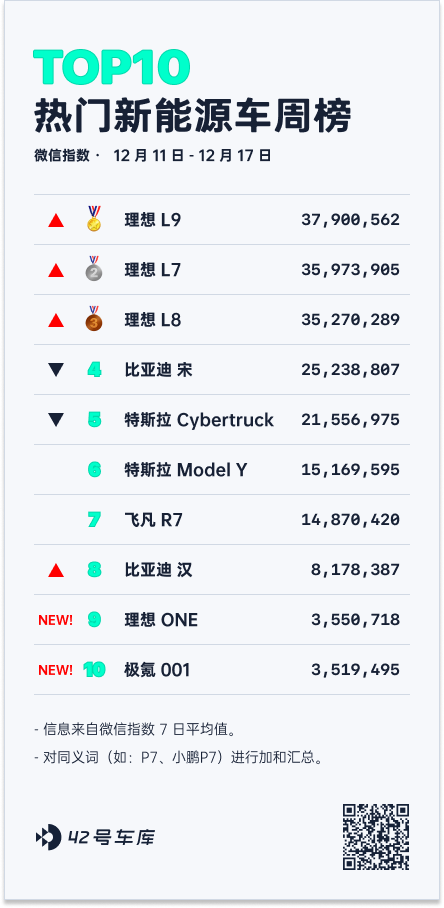
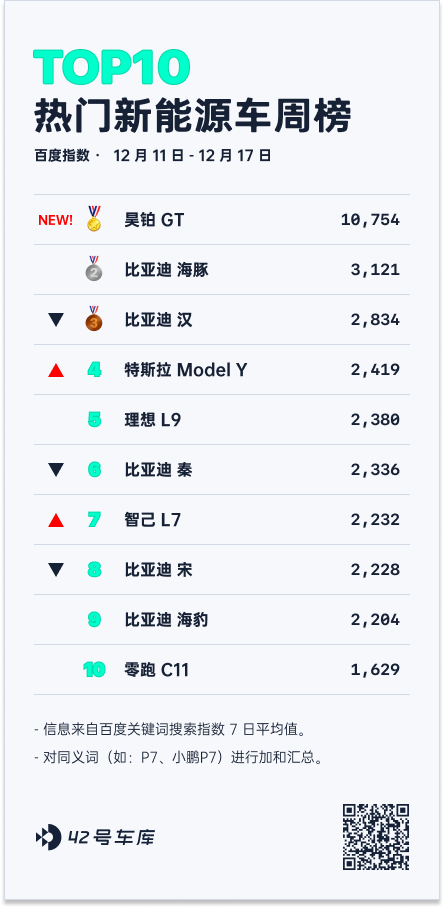
Weekly News Summary
NIO CEO Li Bin Tests 150 kWh Battery Pack with a Final Driving Range of 1,044 km
On December 17, NIO CEO Li Bin personally tested the driving range of the 150 kWh ultra-long range battery pack on a NIO ET7. The test run started in Shanghai, and after driving for over 14 hours, it finally ended at the Longjue East service area in Xiamen, covering a total of 1,044 kilometers, with 3% of battery power remaining.

According to the live broadcast images, when the vehicle reached 1,000 kilometers, 7% of battery power remained. By the end of the test at 1,044 kilometers, there was 3% of battery power left, with the CLTC range showing 36 kilometers remaining. The overall energy consumption of the test was 13.2 kWh/100km, and the average speed of the vehicle was 83.9 km/h. The temperature during the test varied between -2 to 12℃, and the average in-car temperature was 20℃.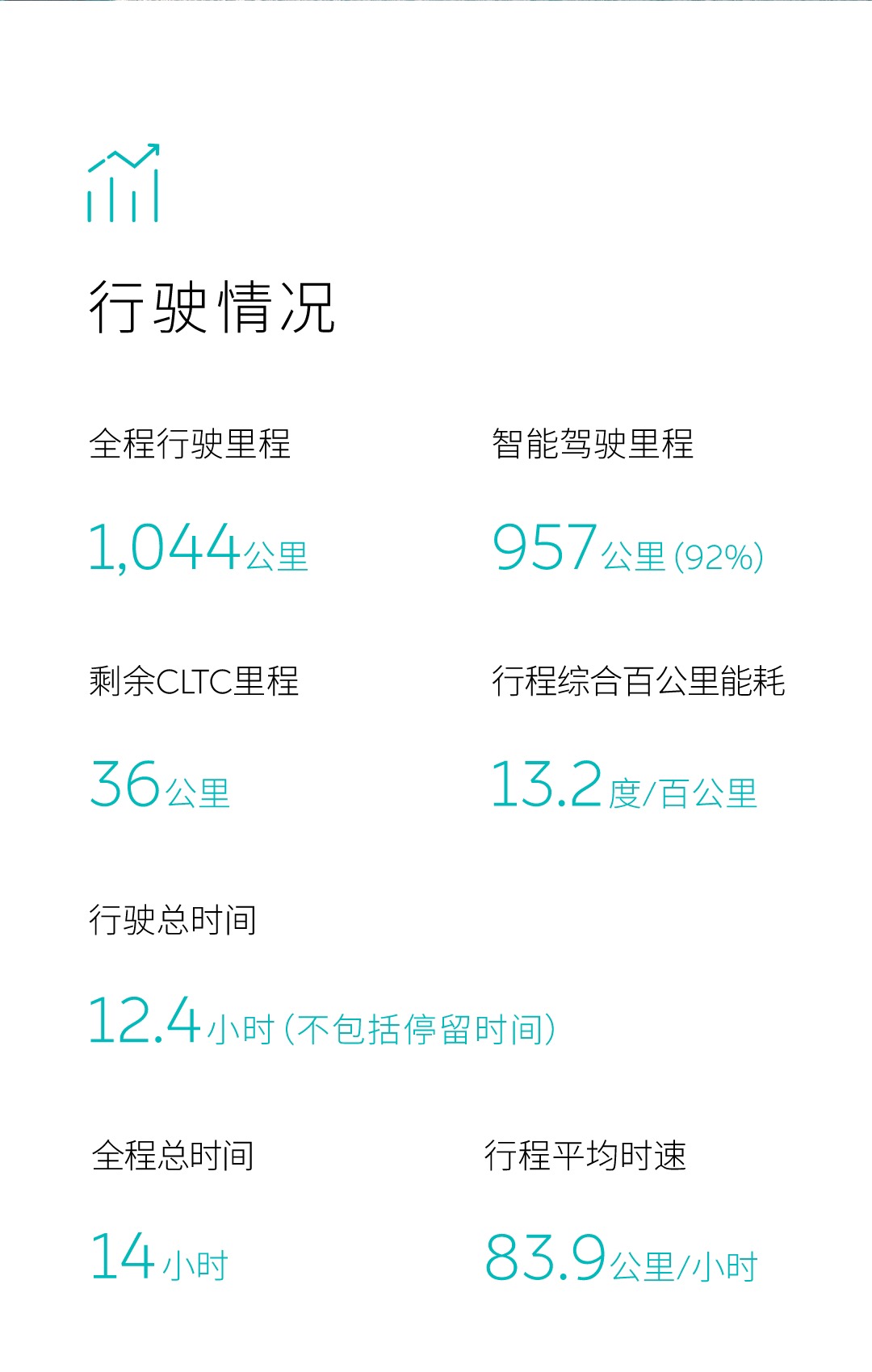
NIO’s 150 kWh battery pack, launched at NIO Day 2021, features a hybrid solid-liquid electrolyte making it a semi-solid-state battery. It’s the world’s first thermal runaway-free soft package CTP battery with an energy density of 360 Wh/kg. Despite containing a larger battery pack, it retains the same size as NIO’s 100 kWh and 75 kWh battery packs, still supporting battery swap. It fits every model of NIO’s first and second generations of platforms, with mass production expected next April.
During the tests, Bin Li also announced that ET9, the executive flagship car, will debut at NIO Day in December 2023. ET9 is a technological flagship that signifies global advanced technology. As a masterpiece of NIO’s technological innovation, it is set to become a global benchmark in the intelligent electric vehicle technology, leading the trend of intelligent EV technology development.
Quick Take:
The 150 kWh battery pack is finally released after its launch at NIO Day in 2021 and very attractive for NIO owners with range requirements. Although according to NIO’s president, Lihong Qin, the cost of the 150 kWh battery pack is very high, equivalent to an ET5 (The price of ET5 75 kWh is 298,000 RMB). As an owner, would you choose to buy or rent it?
Benz Granted Conditional Autonomous Driving Test License in Beijing
On December 16, Mercedes-Benz became one of the first companies to be granted a conditional autonomous driving (L3) road testing license for highways in Beijing, officially initiating the real-world testing of conditional automated driving systems on designated highways.
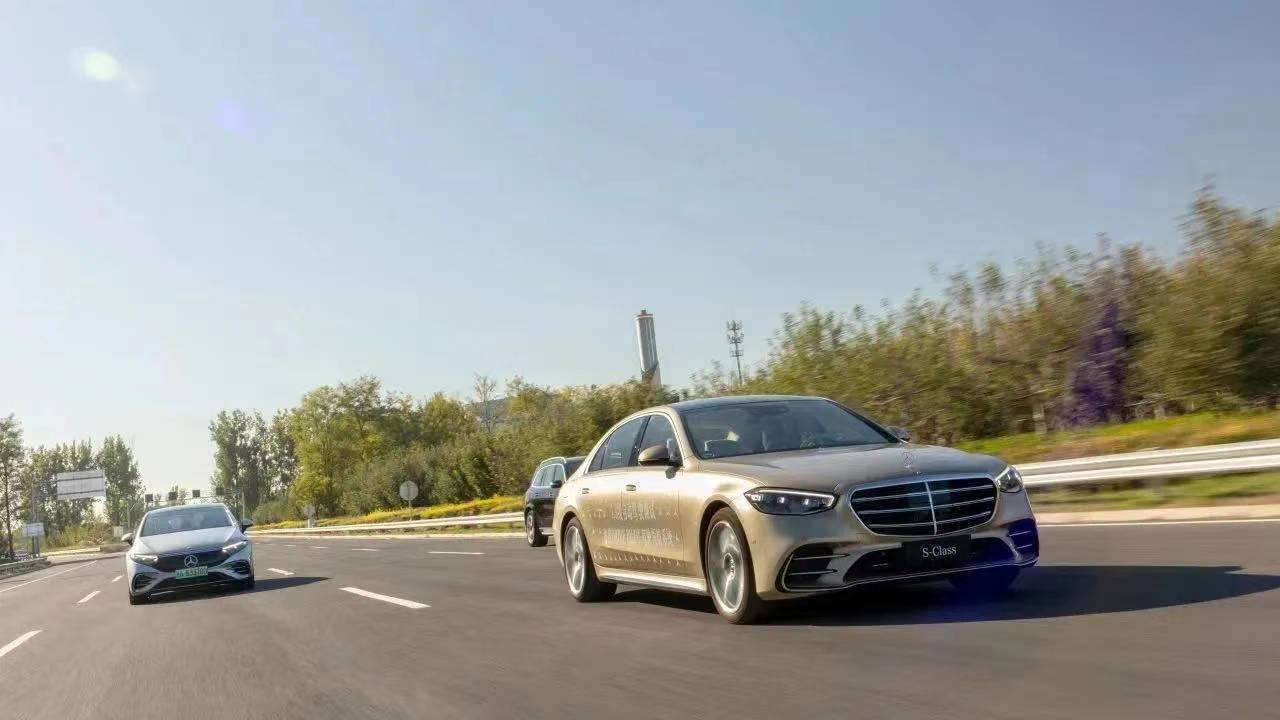
In order for the L3 autonomous driving system to better adapt to China’s infrastructure and traffic conditions, the Chinese R&D team was deeply involved from the very beginning. Since 2021, Mercedes-Benz has been constantly improving system performance through testing and verification on closed Chinese test tracks. Key focus areas of local R&D work include system adaptation to Chinese road markings, construction zones, bus lanes, tidal lanes, and continuous logic optimization.
In 2023, Mercedes-Benz launched the L2+ Navigation Assisted Driving function developed by the Chinese team on the new E-Class with extended wheelbase. It covers highways and urban expressways nationwide, allowing point-to-point high-speed navigation-assisted driving abilities. While driving at high-speed, the vehicle can automatically change lanes, keep distance from heavy vehicles, and overtake slower vehicles. This tailor-made L2+ intelligent driving system for Chinese customers, for instance, allows for automatic lane changes at speeds of 50 km/h.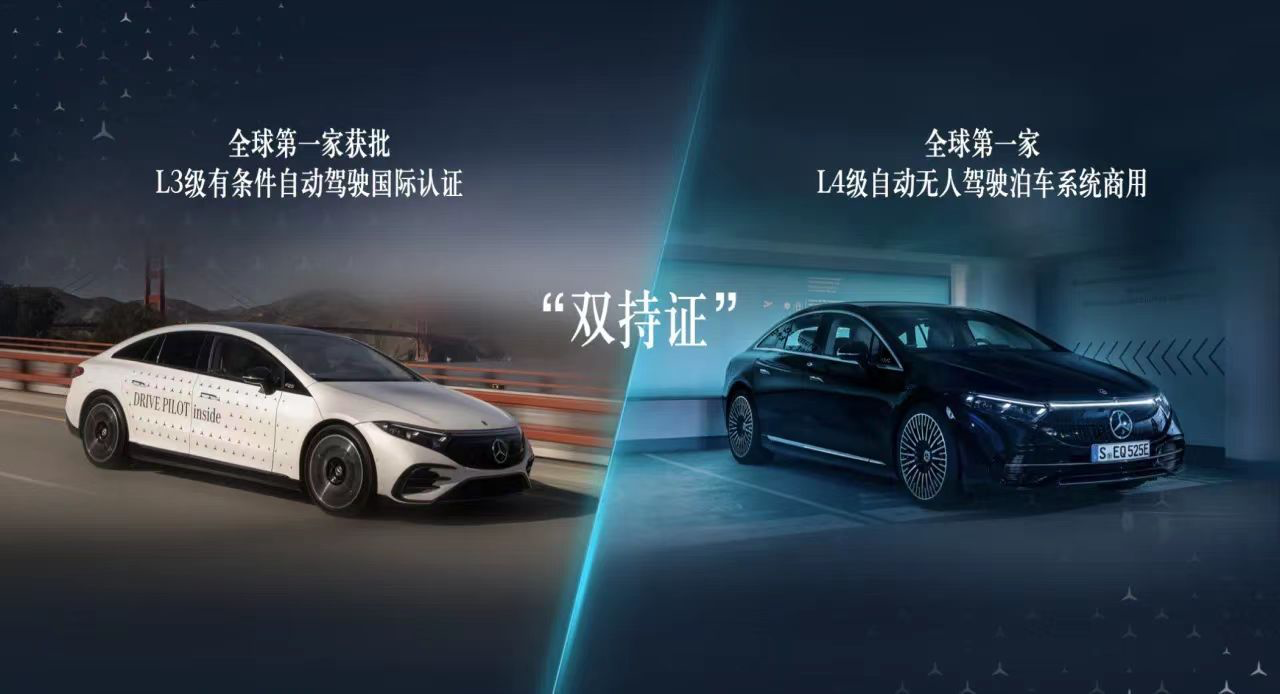
At present, Mercedes-Benz has become the only auto manufacturer in the world that possesses both, L3 level conditional autonomous driving and L4 level autonomous unmanned parking ‘dual certification’. By the end of 2021, Mercedes-Benz received the world’s first conditional autonomous driving (L3 level) system international certification in Germany, and promptly introduced the first vehicle equipped with this system in the German market in May 2022. In 2022, the Mercedes-Benz L4 level autonomous unmanned parking system was granted the world’s first commercial license in Germany. In the first half of 2023, Mercedes-Benz L3 level autonomous driving system obtained commercial permission in Nevada and California in the United States. Currently, officials are fast-advancing the optimization of the L3 level system, with the expectation of achieving a speed of 130 km/h for highway usage by the end of this decade.
Commentary:
Following BMW’s acquisition of the L3 level high-speed road test license in Shanghai, Benz has also obtained an L3 level autonomous driving road test license in Beijing. Let’s revisit the definition of L3 autonomous driving: it’s conditionally autonomous where the vehicle can self-drive in most scenarios; the driver can let go of the steering wheel but must maintain focus to take over in case of emergencies. A critical requirement for L3 self-driving is that, if the vehicle gets into an accident while in autonomous mode, the vehicle manufacturer should be liable for the incident. Thus, law and manufacturers have always taken a cautious stance with respect to L3. L3, therefore, signifies that intelligent driving has transitioned from ‘assisted driving’ to ‘autonomous driving’. We anticipate experiencing genuine L3 autonomous driving on the roads in the future.
Global Promotion of LEVC New Energy Technology
A significant player in the Chinese auto industry, LEVC, has seen substantial progress and development in the realm of new energy technology over recent years. Since the English brand LEVC was invested in by Geely Group in 2006, the company has taken robust strides in global strategy and product innovation.

Geely Group’s investment in LEVC in 2006, followed by a full acquisition of the brand in 2013, marked LEVC’s metamorphosis from a traditional London taxi manufacturer to an active player in the new energy vehicle market. Guided effectively by CEO Cao Cao, LEVC’s transformation included the establishment of a dedicated electric vehicle production factory in Coventry, UK, in 2017.The TX series of electric vehicles launched by LEVC has received positive response in the market. As of October 2023, the global sales of LEVC have exceeded 10,000 units, these vehicles have travelled over 600 million miles in total, making a significant contribution to reducing carbon emissions, estimated to have reduced more than 200,000 tons of carbon dioxide emissions. This achievement has important environmental significance in the field of new energy vehicles.
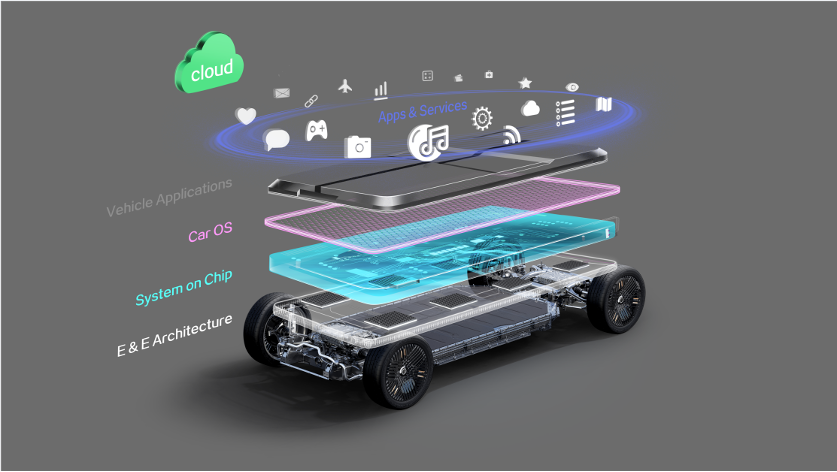
In terms of technological innovation, LEVC has developed a technology architecture called “SOA” (Space Oriented Architecture). The design philosophy of this architecture is to provide high flexibility in vehicle body design, while adopting battery systems from CATL, which supports a range of up to 700 km +, providing users with superior driving experience. Another important goal of the SOA architecture is to improve the utilization rate of vehicle interior space and provide support for future autonomous driving technology, demonstrating LEVC’s deep understanding and preparedness for future technological development trends.
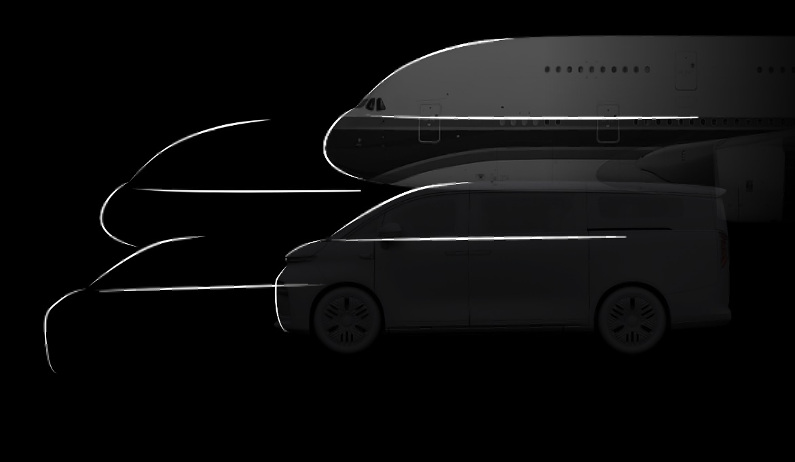
Looking forward, LEVC plans to launch a high-end pure electric MPV based on the SOA architecture, currently codenamed “L380”. The launch of this model will further consolidate LEVC’s position in the new energy vehicle market and may bring new growth points for the company. LEVC’s development trajectory and future planning demonstrate the competitiveness and potential of China’s automobile enterprises in the global new energy vehicle field.
Quick review:
From a traditional London taxi manufacturer to an active explorer of the new energy vehicle market, LEVC has achieved a remarkable transformation under the investment and guidance of Geely. Its unique “SOA” technology architecture not only offers high design flexibility, but also is equipped with CATL’s battery system, enabling its vehicles to achieve a range of more than 700 kilometers, and showing a deep understanding and preparedness for future technological development trends. All of this has solidified LEVC’s position in the field of new energy vehicles. However, challenges and opportunities coexist, how LEVC will develop in the future, we wait and see.
New Generation Domestic Benz E Class Hits the Market
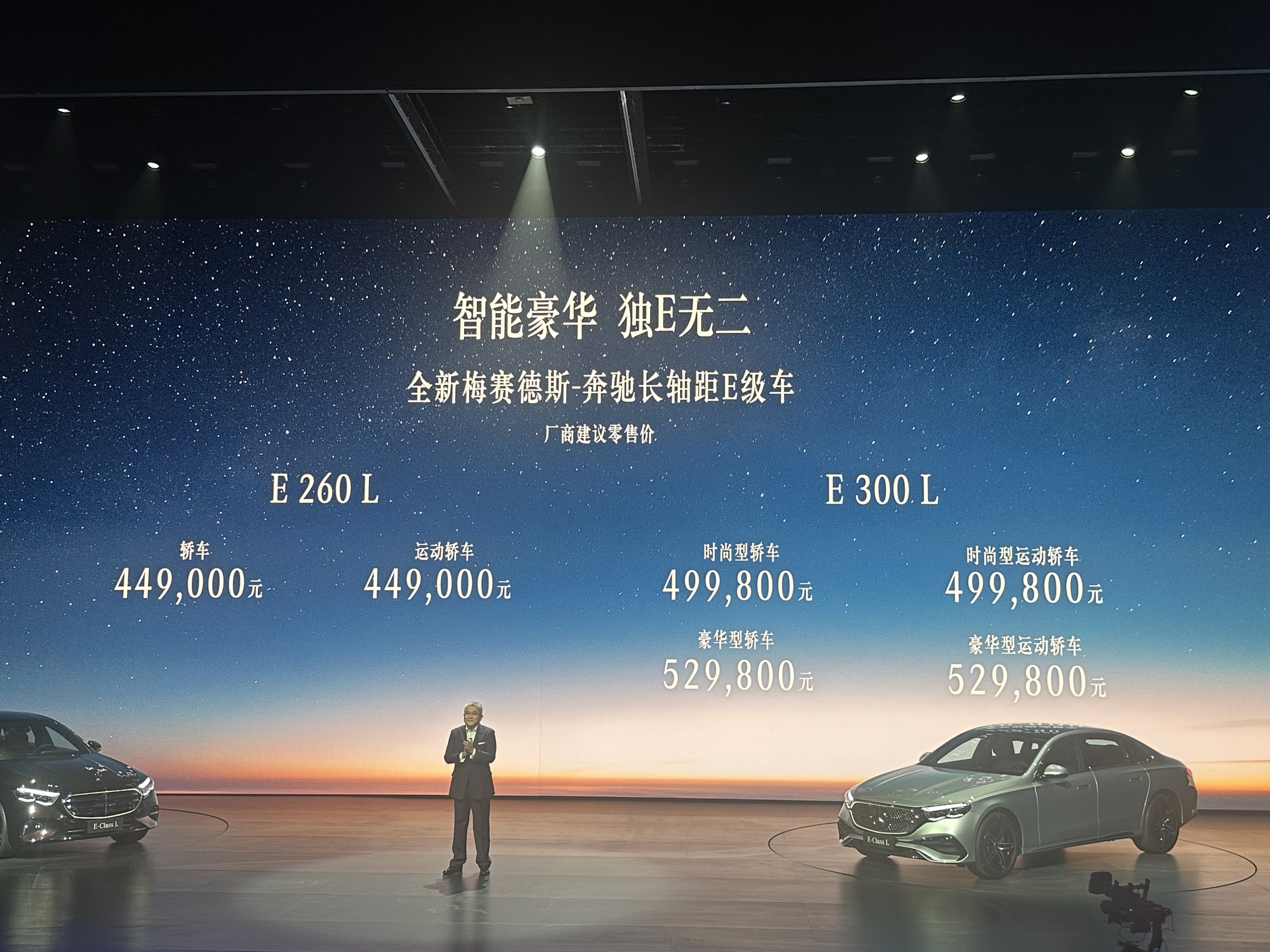
On December 14th, the new generation domestic Benz E class was officially launched, with a total of 6 models launched. The price range is 449,000 to 529,800 yuan. As a replacement product,
new car has upgraded both exterior and interior, equipped with Qualcomm 8295 chip and has 11 China-exclusive rear-row optimizations. The power is still the 2.0T engine, and tuning in two high and low powers has been done. So far, the global cumulative sales of the E class have exceeded 16 million units.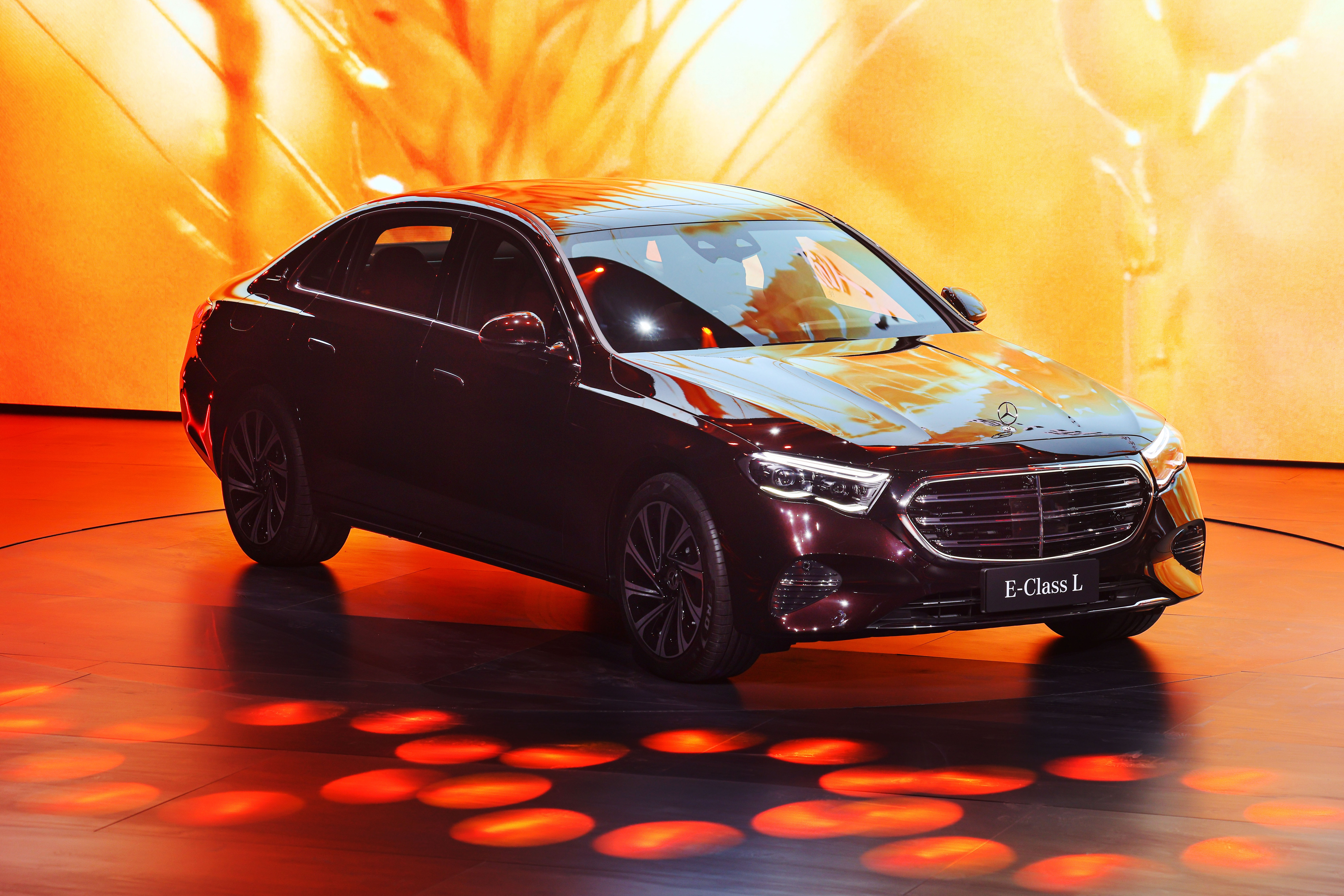
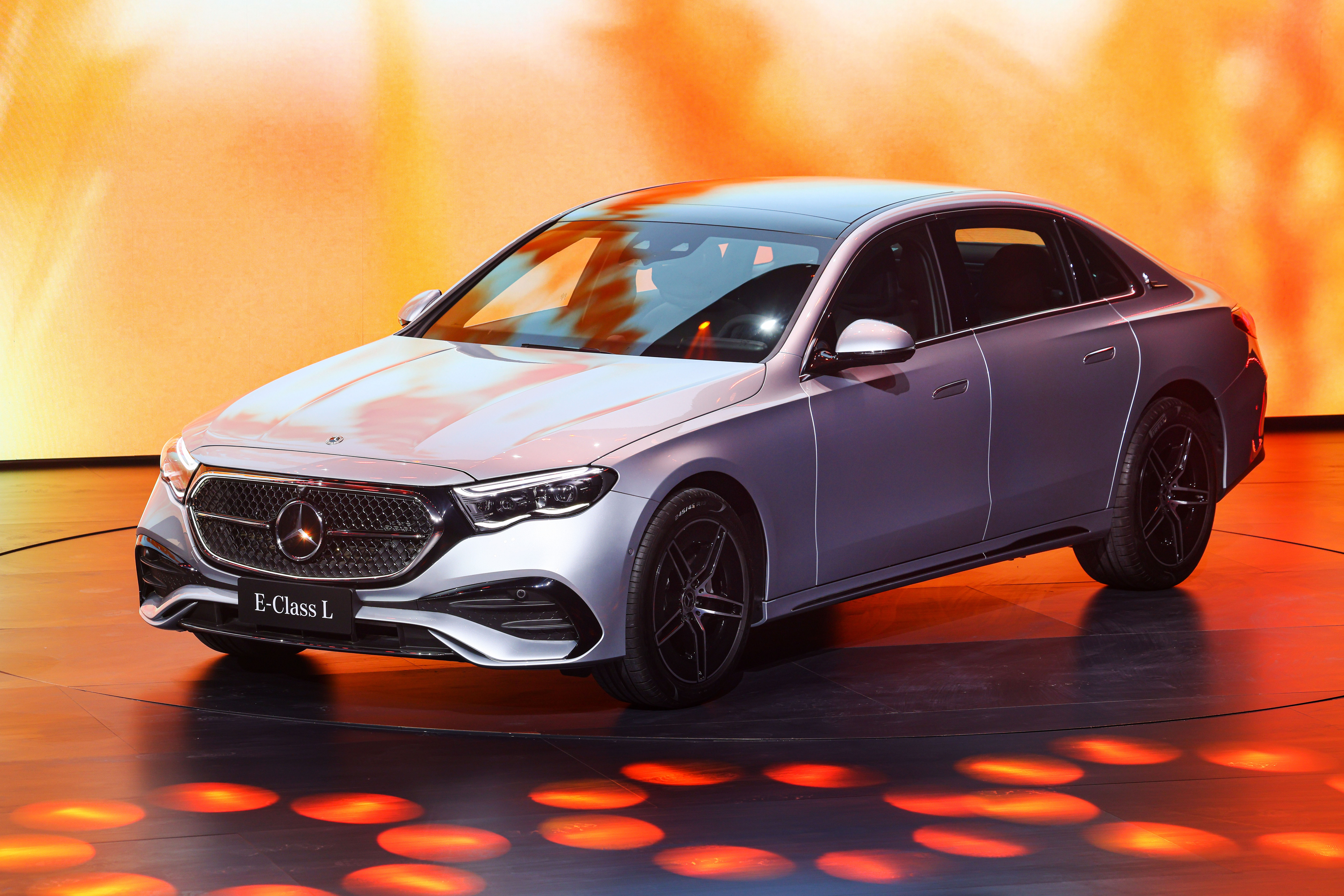
The all-new long-wheelbase Benz E-Class embraces the latest family exterior design, equipped with Nightfall Star River grille, and continues to provide two versions of vehicles for choice, featuring big logos and vertical logos.
As always, the interior exudes Benz’s luxury, equipped with the all-new MBUX Super Screen. Meanwhile, the new car is also retrofitted with the latest style steering wheel. The shortcut physical buttons have been moved from the central armrest to below the main screen, rendering the console more fashionable.
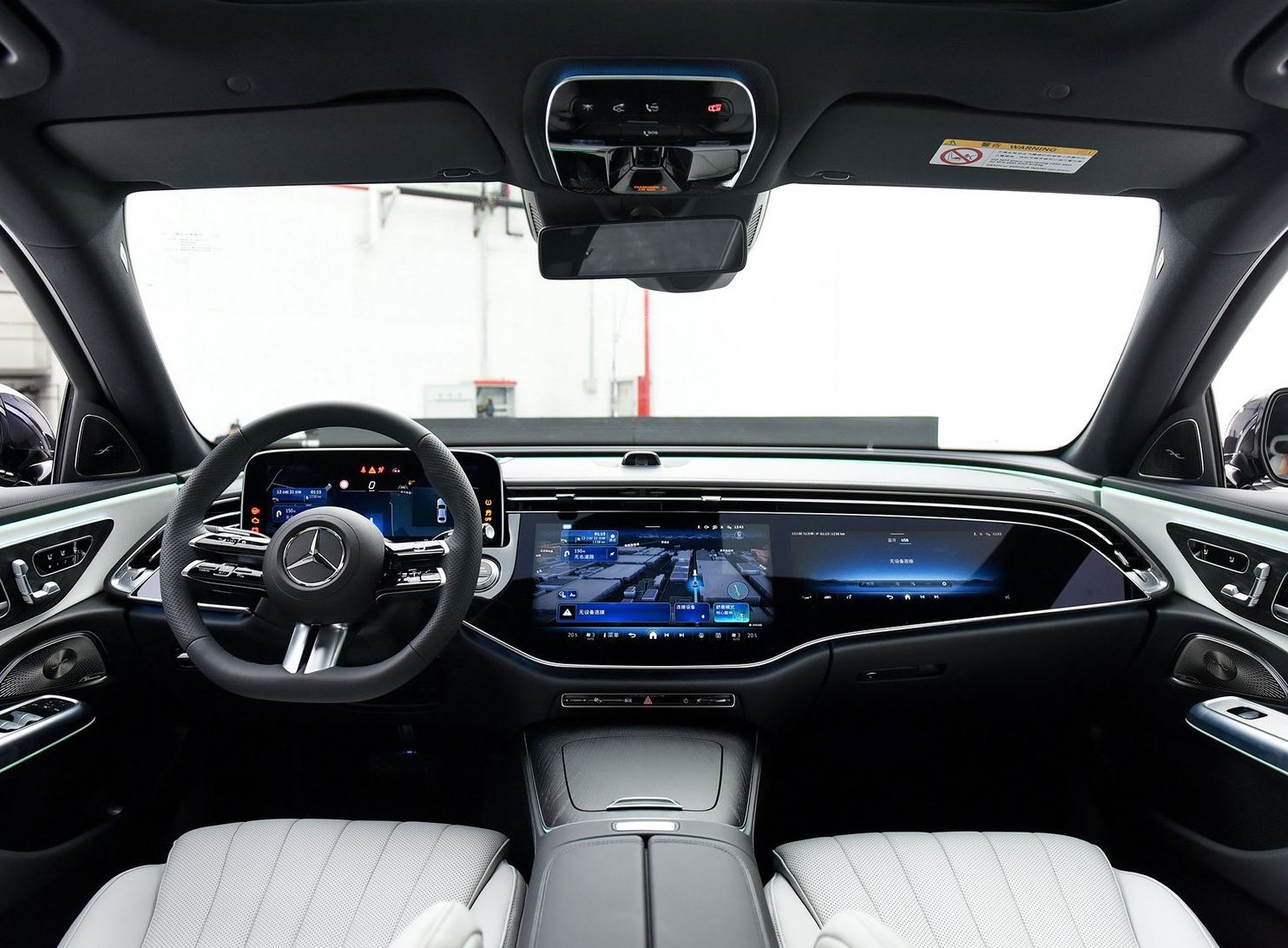
Worth noting is that the all-new long-wheelbase Benz E-Class comes with the Qualcomm Snapdragon 8295 smart cockpit chip, which noticeably enhances the level of cockpit intelligence. Its “Mind-reading Voice Assistant” can also support multiple commands at once.
Regarding driving assistance, the new car can achieve L2+ navigational auxiliary driving, being the first to launch in the Chinese market. It can perform automatic lane change, overtaking, distancing from large vehicles, and auto-enter/exit off-ramps on highways and city expressways. Moreover, it’s optimized for localization with smaller lane change space and lower lane change speed “50 km/h”.
In terms of power, the all-new long-wheelbase benz E-Class comes standard with an M254 2.0-litre inline four-cylinder engine, with a maximum power of 190 kW, maximum torque of 400 N·m, and a 0-100km acceleration time of 6.6 seconds.
Quick Review:
Starting from the 170 sedan developed based on the W136 in 1947, the Benz E-Class has walked through 76 years of history. As a benchmark product for executive sedans, E-Class has slightly declined in recent years against the competition of its peers and the tide of new energy. This upgrade continues to retain the luxury elements of Benz, but further advances in the configuration of the Qualcomm 8295 chip and L2+ level driving assistance. Such upgrading may attract more different groups of consumers. How do you think the market performance of the all-new Benz E-Class will be?
ZEEKR Officially Launches BRIC Battery
Since new energy vehicles have started to come into people’s purview, security issues, charging efficiency problems, etc have always created anxiety for new energy vehicle owners for their daily use.
However, it is obvious that although the issue of battery self-ignition is rarely heard now and the charging replenishing efficiency is increasingly high, problems still exist, and the requirements and needs of users are far from being met.ZEEKR unveiled a new and exciting breakthrough with their Gold Brick Battery on December 14th tackling the problem of battery performance.
Ultimately, the Gold Brick Battery remains a lithium iron phosphate battery with the set aim to vie with ternary lithium batteries. It is well recognized that ternary lithium batteries, with their high energy density and fast charging speed, are better suited for vehicles that require long-range or high performance. However, in terms of safety and cost the ternary lithium batteries don’t measure up to lithium iron phosphate batteries.
So, why can’t we have a cheap, safe lithium iron phosphate battery that maintains a high energy density and fast charging speed? This was the question posed by ZEEKR CEO, An Conghui, at the outset of the Gold Brick Battery launch. He asked: Why can’t a lithium iron phosphate achieve super fast charging?
With the launch and mass production of the Gold Brick Battery, this question was answered.
Here is a brief summary of the core features of the Gold Brick Battery:
- 83.7% volume usage;
- Maximum charging rate of 4.5 C;
- Fast charging speed increased by 25% at minus 10 degrees Celsius;
- 15-minute charge provides a driving range of 500 km;
- 3-second pulse discharge rate of 16 C;
- Production efficiency up by 40%, and cost per kWh down by 14.8%.
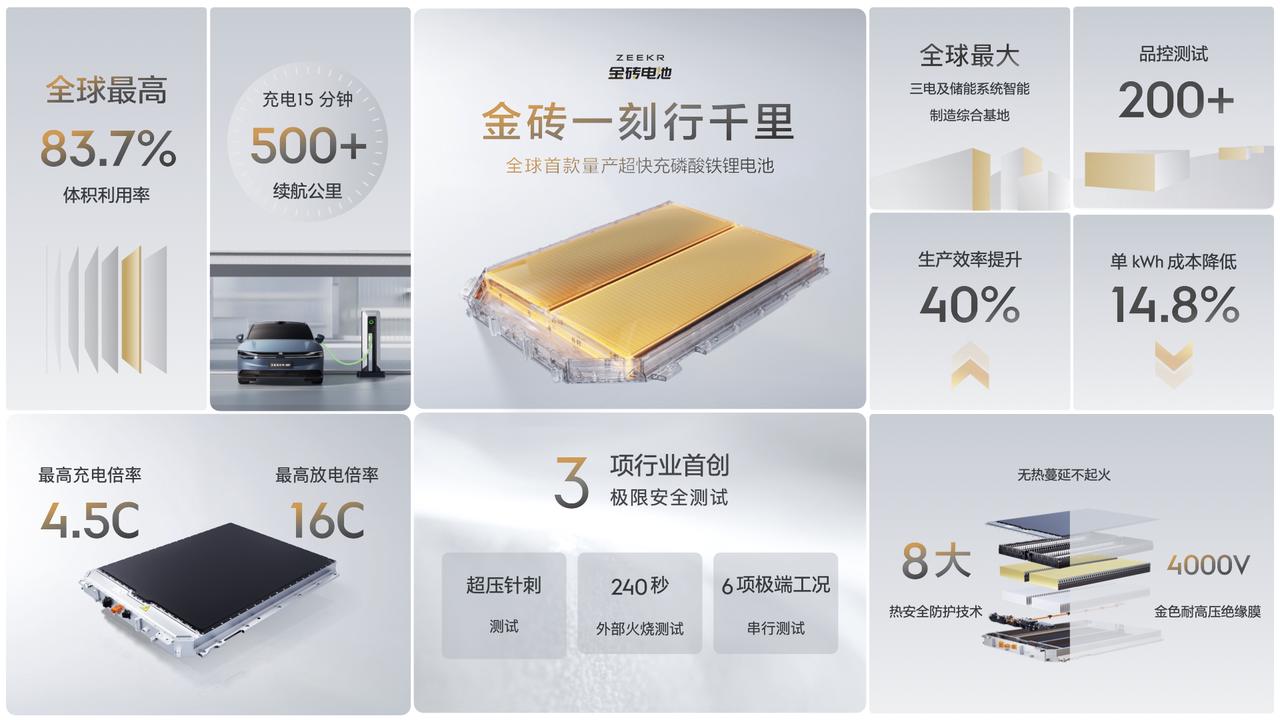
The Gold Brick Battery breaks past the former constraints of lithium iron phosphate batteries, realizing simultaneous performance enhancement and cost reduction.
To achieve these performances, ZEEKR put in considerable effort.
Firstly, the dimensions of the battery were increased to allow for an energy density akin to that of a ternary lithium battery. However, this doesn’t mean the physical size of the battery was increased. Instead, the volume usage was enhanced by fitting more cells into the same battery volume.
To maximise cell space, ZEEKR engineer team made significant alterations to the battery’s structure. Compared to traditional designs, the Gold Brick Battery’s sample circuit length was reduced by 157m and the number of core components decreased by 35%.
As a result, the Gold Brick Battery achieved a volume usage of 83.7%, becoming the world’s first power battery with volume usage over 80%. Thanks to this enhanced volume usage, the energy density of the Gold Brick Battery also rose by over 10%.
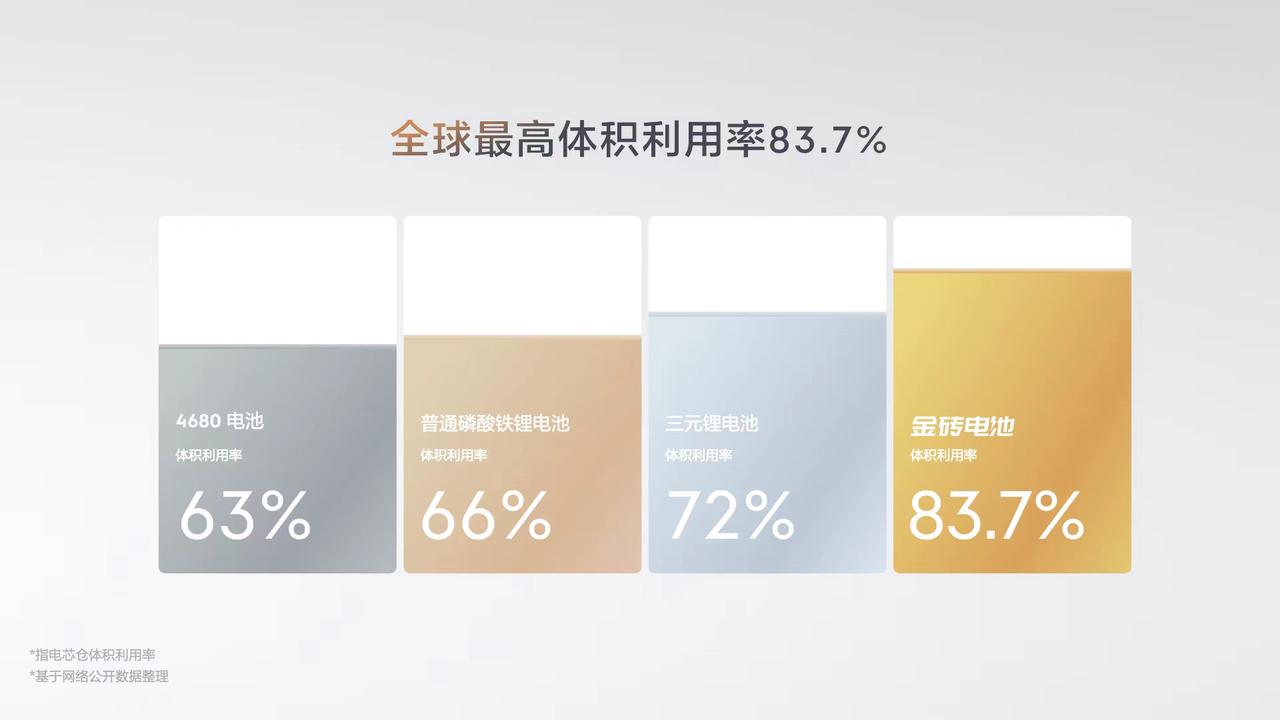
Secondly, consideration was given to the charging and discharging capacity of the Gold Brick Battery.
The ability of the Gold Brick Battery to achieve a maximum charging rate of 4.5 C, as well as a 3-second pulse discharge rate of 16 C, was not just due to ZEEKR’s 800V global architecture and the use of ZEEKR charging piles but also to the innovative restructure of the battery cells and the application of an accelerated lithium-ion technique. This improved the efficiency of lithium-ion release, transmission and intake throughout the entire process.
Lastly, safety is at play. Safety has always been the gold standard for ZEEKR, which has thus far delivered over 180,000 vehicles without any self-ignition. The advent of the Gold-bricks battery provides strong backing for its reputation for safety.
To ensure the safety of the Gold-bricks battery, ZEEKR has taken eight safety precautions and specifically designed a gold insulating film on the surface of the cell that can withstand an impressive 4,000V of direct current. It is precisely this feature that provides the rationale for the name Gold-bricks.

In addition, to test the safety of the Gold-bricks battery, a variety of torture methods have been deployed, such as overvoltage puncturing, 240 seconds of external fire exposure, and a series of six extreme work conditions tests.
It’s worth noting that during the series of six extreme work conditions tests, despite immersion, fire exposure, frost, drag, wheel contact, and high falls, the battery remained perfectly functional.
Now, Zeekr has already announced that the Gold-bricks battery will make its debut in the Zeekr 007. Once the Zeekr 007 officially hits the market on the 27th of December, feel free to tune into our review to see if the Gold-bricks battery delivers as well as it sounds.
Apart from the Gold-bricks battery, ZEEKR is also building a leading fast-charging system, an initiative that has been underway since the brand’s inception.
To date, ZEEKR has achieved the highest possession rate in the industry for supercharge piles. According to official data, as of November 30th, ZEEKR had constructed close to 2,300 supercharging piles, covering over one hundred cities across the country.
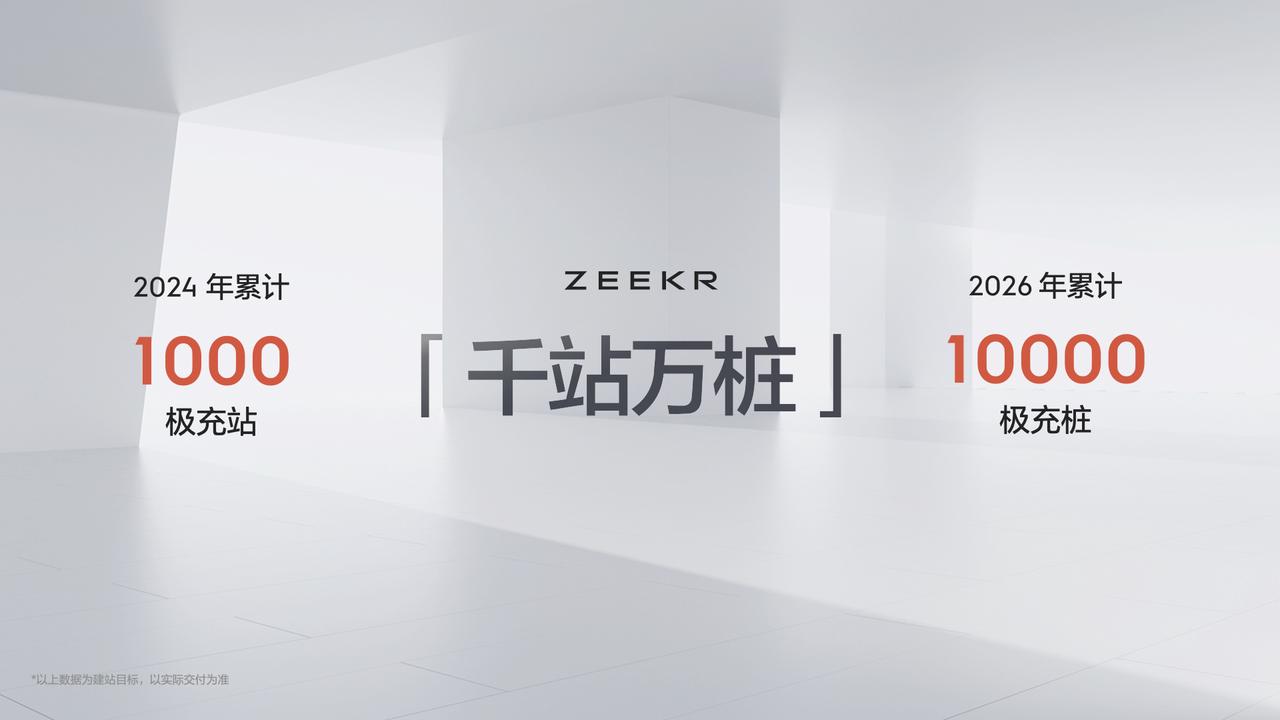
It’s worth mentioning that ZEEKR’s charging stations do not just use a mix of supercharging and regular piles. Instead, they utilize supercharging piles exclusively and maximize the use of power pools via smart power sharing technology to ensure the charging power of each pile.
According to the word, by the end of next year, ZEEKR plans to construct over 1,000 charging stations like these. By the end of 2026, the number of supercharging piles will have saturated more than 10,000 across the board.
In addition, ZEEKR has integrated the entire energy supplementing process into its onboard ecosystem, allowing users to locate charging stations, unlock ground locks, plug and charge via their onboard displays. This feature will be pushed to users with ZEEKR’s latest OTA.
Review:
ZEEKR’s Gold-bricks battery is, no doubt, a major breakthrough in battery technology for new energy vehicles. Its main features, including a space utilization rate of up to 83.7%, a fast-charge speed that increases by 25% at -10 degrees Celsius, and the ability to replenish 500km of driving range within 15 minutes, fully demonstrate the battery’s efficiency and practicality. This breakthrough not only upgrades lithium iron phosphate battery technology but also challenges the entire new energy vehicle industry.
However, no matter how technology advances, it ultimately needs to be reflected in the user experience. Whether ZEEKR’s ‘Brick Battery’ can truly meet user needs, remains to be seen from actual market feedback. From available data, the ‘Brick Battery’ has made significant improvements in safety and charging efficiency, which will undoubtedly provide users with a better driving experience.
This article is a translation by AI of a Chinese report from 42HOW. If you have any questions about it, please email bd@42how.com.
